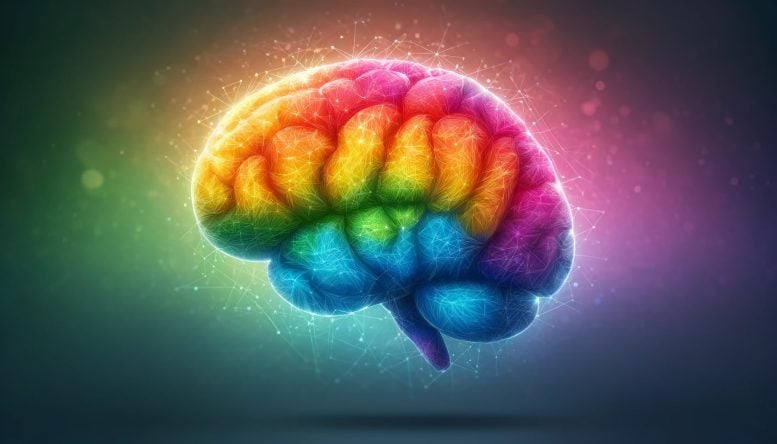Brain development differences in autistic boys and girls uncovered by scientists

A study conducted by researchers at UC Davis reveals considerable disparities in cognitive development between autistic girls and boys, particularly concerning cortical thickness. This study underlines sex-specific modifications and emphasizes the need for revising traditional perspectives on autism, generally disproportionally centered on males, thereby neglecting essential considerations in females, resulting in potential underdiagnosis and innate differences in girls. The credit for this study goes to SciTechDaily.com.
The UC Davis team found significant differences in brain development between autistic boys and girls aged 2-13. This research, which is featured in Molecular Psychiatry, discloses sex-specific variances in the cortex, the brain's outer layer, thickness.
This study drew attention due to the scarcity of research on cortical development in autistic girls diagnosed less frequently than boys. The ratio of autism diagnoses is nearly four males to one female.
Christine Wu Nordahl, a senior author of the study and a professor at the Department of Psychiatry and Behavioral Sciences and the UC Davis MIND Institute, said that this gender bias partly results from underdiagnosis of females. However, she added that biological differences also play a significant role.
The cortex, the brain's outer layer, comprises several layers containing millions of neurons firing together, allowing cognitive functions and emotions. The cortex extensively thickens until around age 2 due to the creation of new neurons and then thins after this peak. Previous studies discovered differential thinning processes in autistic and non-autistic children. However, whether these differences exist between autistic males and females had not been examined.
Derek Andrews, the study's lead author and an assistant project scientist at the Department of Psychiatry and Behavioral Sciences and the MIND Institute, emphasized the importance of understanding how sex differences in brain development may interact with autistic development, leading to different developmental outcomes in boys and girls.
The team examined the brain scans of 290 autistic children, including 202 males and 88 females, and 139 non-autistic individuals, 79 males and 60 females, under the MIND Institute’s Autism Phenome Project (APP), one of the world's largest longitudinal autism studies. The project incorporates the Girls with Autism Imaging of Neurodevelopment (GAIN) study aimed at increasing female representation in research. The researchers used MRI scans at up to four intervals between ages 2 and 13.
Findings reveal that at age 3, the cortical thickness was significantly more in autistic girls compared to non-autistic peers, comprising about 9% of the total cortical surface. Contrastingly, these differences were minimal when comparing autistic and non-autistic males of the same age. Additionally, compared to males, autistic females showed quicker rates of cortical thinning into middle childhood across various neural networks.
Autism-related differences in the brain, Andrews said, were found across nearly all networks in the brain.
He noted that initially, it was surprising to find the differences were greater at younger ages. However, due to the rapid cortical thinning in autistic girls by middle childhood, differences between autistic boys and girls were less pronounced.
The study crucially highlights the need for longitudinal studies involving both sexes, Nordahl said. She stressed that the full picture only becomes clear when tracking both boys and girls across development.
This led Nordahl, currently directing the APP, to initiate the GAIN study in 2014 to increase the representation of autistic females in research, specifically focusing on understanding how they might differ from boys.
GAIN is unique, and Andrews said he hopes other researchers will follow suit in including more autistic girls in autism research. “Autistic females represent about 20% of the autistic population. Any successful effort to understand autism will need to include autistic females.”
Reference: “Sex differences in trajectories of cortical development in autistic children from 2–13 years of age” by Derek S. Andrews, Kersten Diers, Joshua K. Lee, Danielle J. Harvey, Brianna Heath, Devani Cordero, Sally J. Rogers, Martin Reuter, Marjorie Solomon, David G. Amaral and Christine Wu Nordahl, 16 May 2024, Molecular Psychiatry. DOI: 10.1038/s41380-024-02592-8
Co-authors on the study include Kersten Diers and Martin Reuter of the German Center for Neurodegenerative Diseases; Devani Cordero of Massachusetts General Hospital; and Joshua K. Lee, Danielle J. Harvey, Brianna Heath, Sally J. Rogers, Marjorie Solomon and David Amaral of UC Davis.
The study was supported by the National Institute of Mental Health (R01MH127046, R01MH128814 and R01MH103284), the National Institute of Child Health and Development (P50 HD093079) and the MIND Institute Intellectual and Developmental Disabilities Research Center (P50 HD103526).




